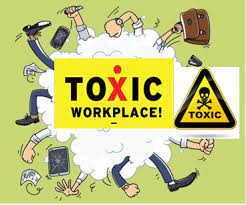
Whether you are a success or failure in life has little to do with your circumstances; it has much more to do with your choices. – Nido Qubein
How adaptive to change are you? Are you an early adapter or a reluctant embracer of change? What is your initial response to the word change? What emotion does it invoke when you hear the word? Do you naturally resist change?
In his book, The 15 Invaluable Laws of Growth, John Maxwell shares the following story about a lonely woman who purchased a parrot from a pet store:
After only one day of having it, she returned to the store and told the storekeeper how disappointed she was with it. “That parrot hasn’t said a word yet!” she lamented.
“Does it have a mirror?” asked the storekeeper. “Parrots like to be able to look at themselves in the mirror.” So the lady bought a mirror and returned home.
The next day she was back again, reporting that the bird still wasn’t speaking. “What about a ladder?” the storekeeper asked. “Parrots enjoy walking up and down a ladder.” So the parrot owner bought a ladder and returned home.
On the third day, she was back again with the same complaint. “Does the parrot have a swing?” was the shopkeeper’s solution. “Birds enjoy relaxing on a swing.” She bought the swing and went home.
The next day she returned to the store and announced that the bird had died. “I’m terribly sorry to hear that,” said the storekeeper. “Did the bird ever say anything before it died?”
“Yes,” said the lady. “It said, ‘Don’t they sell any food down there?’”
What’s the moral of this silly story? Change for the sake of change isn’t going to help you. If you are going to make changes, you must make sure they’re the right ones.
This humorous story illustrates that while we can be busy making changes in hopes of a different outcome, change for the sake of change does not guarantee it.
Wiring in Management Journey, Robert Tanner states, “The truth is that human beings do not naturally resist change. We accept changes to our lives all the time, especially when we like the change that others present to us. We will change if we believe the change will be beneficial to us.” And this is a challenge for many leaders. How well do you communicate the benefits of change in a way that people will step out of their comfort zones and embrace it?
We resist change for the obvious reasons:
- Fear of the unknown
- Loss of control
- Lack of clarity or understanding of why the change is beneficial
Or it could simply come down to what my good friend Jeff Turner says, “I’m pretty stubborn”, which is reflective of how many of us feel about change at times. We just don’t want to go there.
If you are a leader about to implement change in any capacity, make sure you have checked these boxes before proceeding.
This change is the right change and comes at the right time
Nothing could be worse than making the right change at the wrong time. Make sure that the change is right and your timing is right. If not, you are about to navigate some rough times.
This change reflects a consensus of your key people
Making change without the input and counsel of your key people can cause great damage. The people most impacted by a major change should be seated at the table during discussions prior to the change being implemented.
This change aligns with your values
When implementing any change within your organization, make sure that it does not in any way conflict with your core values. Any change being considered or implemented should be a compliment to your values, not an obstruction to them.
This change is worth defending
When all is said and done, any change worth implementing in your organization must be one worth defending with integrity. If you can’t defend it, don’t implement it.
This change will stretch us
As is the case oftentimes, change will stretch you as a leader and it will stretch your team. Growth tends to do that. It will move you out of your comfort zone, cause you to look at your challenges in a different light, and grow you beyond what you previously thought possible.
Final Thoughts
Not all change is good. Not all is bad. How it works for you is the result of the choices you make along the way.
©2023 Doug Dickerson










